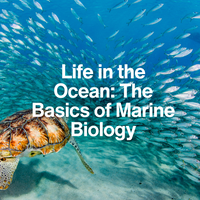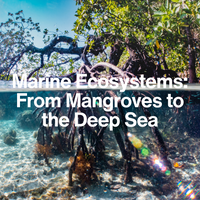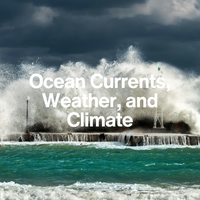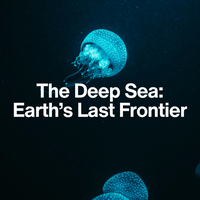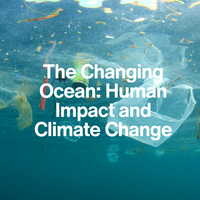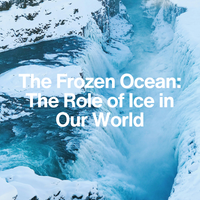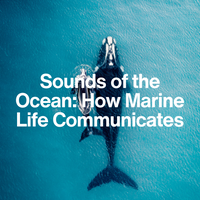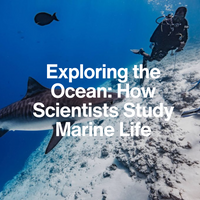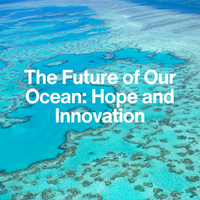LESSON 4
How Can We Use the Ocean’s Power for Renewable Energy?

Introduction:
A Blue Planet, Full of Potential
The ocean is a force—mighty, constant, and full of energy. And as the world races to move away from fossil fuels, scientists and engineers are looking to the sea for answers.
From powerful waves and predictable tides to offshore wind and even ocean-based biofuels, the ocean holds massive potential to generate clean, renewable energy. But with that potential comes responsibility: we must harness it carefully, sustainably, and with marine life in mind.
In this lesson, we’ll explore the exciting world of blue energy—how it works, where it’s happening, and what it could mean for our planet’s future.
1. Offshore Wind: Power from the Breeze
Offshore wind farms use giant turbines placed at sea to capture strong, steady ocean winds.
Why it works:
- Offshore wind is often stronger and more reliable than on land.
- Turbines can be placed far from coastlines, reducing visual impact and land use.
How it helps:
- A single large offshore wind farm can power millions of homes.
- It provides a clean alternative to coal and gas, with no emissions once operational.
Challenges:
- Construction and maintenance are complex and costly.
- Turbines must be carefully placed to avoid whale migration paths, seabird flyways, or sensitive ecosystems.
Example: The UK’s Hornsea Project is the largest offshore wind farm in the world, helping the UK lead Europe in offshore wind energy.

Did you know?
Floating wind farms are now being developed for deeper waters, opening up new frontiers for renewable power.
2. Wave and Tidal Energy: Predictable and Powerful
The ocean is constantly moving—and that motion holds energy we can convert into electricity.
Wave energy systems capture the up-and-down motion of surface waves using floating devices or underwater pressure systems.
Tidal energy systems use underwater turbines or tidal barrages (like small dams) to generate power from the rising and falling tides.
Why it matters:
- Unlike wind or solar, tidal cycles are highly predictable, making them a stable power source.
- Wave energy has enormous potential—especially in island nations and coastal communities.
Challenges:
- These technologies are still emerging, and costs remain high.
- Devices must be built to withstand harsh marine environments.
- They must be designed to minimise impacts on marine life and sediment movement.
Example: The MeyGen project in Scotland is one of the largest tidal stream energy projects in the world.

Did you know?
Ocean waves carry five times more energy per square metre than wind.
3. Ocean Thermal Energy: Using Temperature Differences
The ocean has layers—and those layers hold energy. Ocean Thermal Energy Conversion (OTEC) uses the temperature difference between warm surface water and cold deep water to generate electricity.
How it works:
- Warm water heats a fluid with a low boiling point (like ammonia).
- The vaporised fluid turns a turbine, generating power.
- Cold water from the deep ocean cools and condenses the fluid back to repeat the cycle.
Why it’s promising:
- OTEC can provide 24/7 power, especially in tropical regions.
- It also produces cold water for air conditioning or aquaculture.
Challenges:
- Infrastructure is complex and still in early development.
- Environmental impacts on deep-sea ecosystems must be considered.

4. Marine Biofuels: Growing Energy at Sea
Another way to generate ocean-based energy is by growing it.
Algae and seaweed can be used to produce biofuels—renewable alternatives to petrol or diesel.
Why it’s exciting:
- Algae grows quickly, needs no freshwater or farmland, and absorbs carbon as it grows.
- Seaweed farms can also support biodiversity and carbon storage if managed well.
Current uses:
- Some biofuels are already being tested in shipping and aviation.
- Seaweed is also being explored for use in bioplastics and packaging.

5. Keeping It Sustainable: Ocean First
All energy sources—even clean ones—come with risks.
The good news? Many new ocean energy projects are now being designed with marine protection in mind from the start.
Conclusion
Powering the Future, Protecting the Sea
The ocean is full of potential—not just for energy, but for renewal, resilience, and inspiration. As we transition to cleaner energy, blue technologies can help reduce emissions and fight climate change, while also creating opportunities for innovation, jobs, and sustainable growth.
The key is balance: using the ocean’s power wisely, carefully, and in harmony with nature. Done right, ocean energy can be a win—for people and the planet.
Key Takeaways:
Offshore wind, tidal, and wave energy offer clean, renewable alternatives to fossil fuels.
The ocean’s movement, heat, and biology can all be harnessed for sustainable energy production.
New technologies like OTEC and algae-based biofuels hold promise for future energy systems.
All ocean energy projects must be planned responsibly to avoid harming marine ecosystems.
NEXT LESSON
The Ocean’s Role in the Future of Life on Earth
To close this bloc, we’ll explore the big picture—how the ocean shapes our climate, our wellbeing, and our future, and why protecting it is one of the most important actions of our time.


